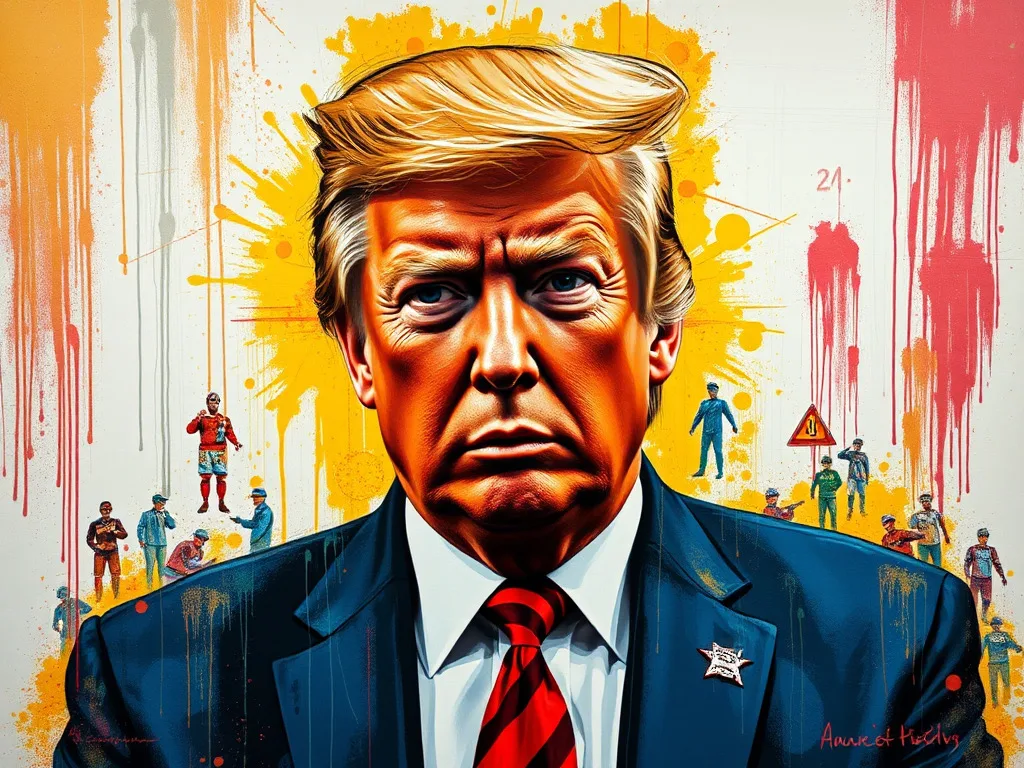America’s Looming Democratic Crisis
Introduction to Trump’s Authoritarianism
A story of Trump’s Authoritarianism while not a new tale, is unique in American history. As prices spiked during the post-pandemic recovery, a fumbling communicator in the body of Joe Biden failed to discuss his accomplishments to the American people, and the corporate news downplayed Trump’s legal problems, American voters handed the presidency to Donald Trump—a convicted felon and fascist. Germany in 1933 elected Adolph Hitler as Chancellor of Germany in a free and fair election. We all know how that worked out for him.
This isn’t hyperbole

He floated deploying the military against protesters, gutting news outlets critical of his administration, and using police-state tactics to deport 11 million undocumented immigrants. As the United States nears its 250th anniversary, democracy looks alarmingly fragile.
If this behavior is acceptable in a diverse population, I suggest the American Constitutional Republic is doomed to fail. The words of Benjamin Franklin ring true…when asked what kind of government are you creating, replied, “A Republic…if you can keep it.” Perhaps after 250 years is when it all falls apart.
A Story of Trump’s Authoritarianism: Is This The New Normal?
Trump’s rise mirrors the global trend of elected leaders eroding democratic systems from within. In a Journal of Democracy article, University of Chicago scholars Tom Ginsburg and Aziz Huq explored “near misses” when democracies teetered on the edge of authoritarianism but pulled back. Their analysis of Finland in the 1930s, Colombia in the 2000s, and Sri Lanka in the 2010s reveals lessons—and stark contrasts—for the U.S. today.
A Story of Trump’s Authoritarianism in Historical Context
Finland in 1930 faced a surge of right-wing authoritarianism through the Lapua movement, modeled after Mussolini’s fascists. This violent group kidnapped political foes and gained the conservative president’s tacit support. Yet Finnish democracy survived. Key military leaders refused to back the Lapua movement, courts issued harsh sentences for violence, and political parties united against the threat. By 1937, a center-left coalition secured power, steering the nation away from fascism.
Colombia’s democracy nearly collapsed under President Álvaro Uribe in the 2000s. Uribe sought to extend his rule and launched a crackdown on journalists. Yet democratic institutions held firm. Courts blocked his attempt to seek a third term, and his successor rejected his authoritarian tendencies, restoring institutional norms.
Sri Lanka in the 2010s seemed destined for democratic collapse. Mahinda Rajapaksa packed his government with relatives, jailed journalists, and altered the constitution to seek a third term. But opposition leaders united to defeat him in 2015. When Rajapaksa considered annulling the vote, military and judicial leaders refused to comply, ensuring the democratic transfer of power.
What A Story of Trump’s Authoritarianism Reveals
Ginsburg and Huq highlight one critical factor in these near-misses: elites in courts, the military, and other institutions resisted authoritarian overreach. Their actions mattered. In Finland, conservative politicians distanced themselves from extremists. Alson Sri Lanka and Colombia, courts and opposition leaders held the line.
In the United States, institutional resistance has already played a role in blocking Trump’s authoritarian impulses. During his first term, courts struck down multiple unconstitutional executive orders, and the military refused his request to use force against protesters. However, Trump’s return to power comes with a plan to gut institutional checks.
Fighting Back Against Democratic Backsliding
Stanford’s Larry Diamond and Heidelberg’s Aurel Croissant studied democratic backsliding in Asia and noted a troubling trend: modern autocrats don’t seize power through coups or revolutions. Instead, they exploit social polarization, weaponize identity politics, and chip away at civil liberties gradually. Sound familiar?
Diamond and Croissant argue that reversing democratic erosion requires public commitment to democratic values and trust in institutions. In Poland, this theory played out when mass protests and historic voter turnout ousted anti-democratic leaders in 2023. The United States could take a page from Poland’s playbook. Young voters there turned out in record numbers and rejected far-right candidates.
Why A Story of Trump’s Authoritarianism Is Different

The U.S. faces unique challenges in resisting authoritarianism. Trump thrives on disinformation, exploiting fractured media ecosystems and social polarization. He makes good use of the corporate media to spread his misinformation without emphasizing his legal problems arising from his conduct as both President and spinner of disinformation in his first term–described by his press secretary as alternative facts. The breakdown of the independent free press can be traced directly to Ronald Reagan’s administration. By covering up his questionable behavior the corporate press allows for His cult of personality undermining institutional trust, thus making it harder for Americans to unite against his anti-democratic agenda.
Still, story offers hope. In Finland, Colombia, and Sri Lanka, people power and principled elites proved decisive. Resistance requires a clear majority that values democracy and institutions willing to stand firm. Americans must rise to the challenge. Trump’s assault on democracy can be stopped, but only if enough citizens care enough to fight back. It is difficult to remain optimistic about the strength of our Constitutional Republic.
We see nothing that speaks to a military support of the norms of democracy or in expressing a willingness to overturn the results of a free and fair election to rid the nation of its authoritarian threat. We see nothing from a corporate press that leans to the extreme right, or a meaningful resistance from Congress fulfilling their role as the check and balance on executive power. Yet hope can be a formidable weapon against a playground bully with the means of power at his fingertips.
Sources Cited
Diamond, L., & Croissant, A. (2020). Democratic backsliding in Asia. Journal of Democracy.
Ginsburg, T., & Huq, A. (2018). Near misses in democracy. Journal of Democracy.
Suggestions for Further Reading
Levitsky, S., & Ziblatt, D. (2018). How Democracies Die. Explains how democratic systems collapse from within.
Snyder, T. (2017). On Tyranny: Twenty Lessons from the Twentieth Century. A guide to resisting authoritarianism.
Runciman, D. (2018). How Democracy Ends. Analyzes modern threats to democracy.
Applebaum, A. (2020). Twilight of Democracy. Examines global democratic erosion.
Gessen, M. (2020). Surviving Autocracy. Chronicles Trump’s anti-democratic actions.
Kendzior, S. (2020). Hiding in Plain Sight. Details how disinformation sustains autocrats.
Diamond, L. (2019). Ill Winds. Explores why democracy is struggling globally.
Fukuyama, F. (2018). Identity: The Demand for Dignity and the Politics of Resentment. Connects identity politics with authoritarianism.
Mounk, Y. (2018). The People vs. Democracy. Argues for democratic renewal.
Disclaimer: The images and videos in this post are AI-generated creations, intended purely for illustrative and conceptual purposes. They are not real-life representations and should not be interpreted as such. Their sole purpose is to offer a visual means of exploring the topics discussed in this post.




